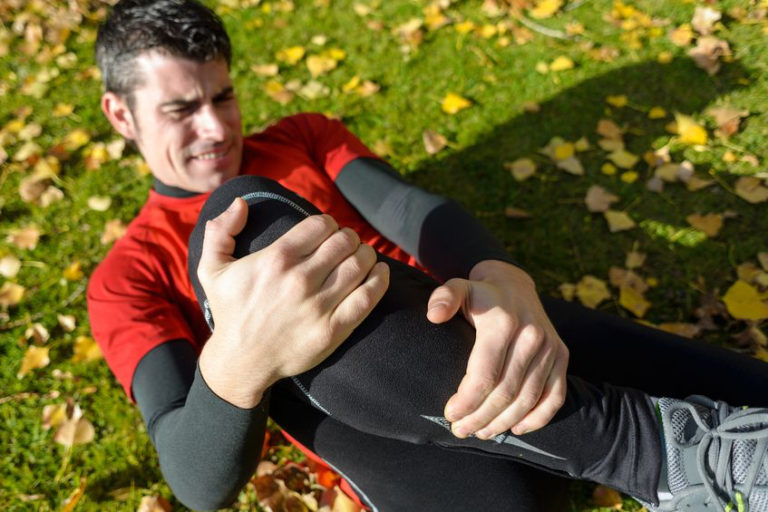Understanding Torn Meniscus Recovery

A torn meniscus is a common knee injury that occurs when the cartilage that cushions the knee joint is torn. This can happen due to a sudden twisting motion, a direct blow to the knee, or repetitive stress on the joint. Understanding the nature of the tear and the factors influencing recovery is crucial for effective treatment and a successful return to activity.
Types of Meniscus Tears and Severity
The severity of a meniscus tear can range from a small, partial tear to a complete tear that separates the cartilage. The location of the tear also plays a role in determining the severity. Here are the different types of meniscus tears:
- Horizontal tear: This type of tear occurs across the width of the meniscus.
- Vertical tear: This type of tear occurs along the length of the meniscus.
- Radial tear: This type of tear is a combination of a horizontal and vertical tear.
- Degenerative tear: This type of tear occurs due to wear and tear on the meniscus over time. It is more common in older adults.
Factors Influencing Recovery Time
Several factors can influence the recovery time for a torn meniscus. These factors include:
- Age: Younger individuals tend to recover faster than older individuals due to their greater capacity for healing.
- Activity Level: Individuals who are more active tend to have a longer recovery time, as they need to regain a higher level of function.
- Tear Location: Tears in the outer portion of the meniscus, which has a better blood supply, tend to heal faster than tears in the inner portion, which has a poorer blood supply.
- Severity of the Tear: A complete tear typically takes longer to heal than a partial tear.
Non-Surgical Treatment Options
For many people, a torn meniscus can be treated without surgery. The goal of non-surgical treatment is to reduce pain and inflammation and restore knee function. Common non-surgical treatment options include:
- RICE (Rest, Ice, Compression, Elevation): This is a common treatment for any soft tissue injury, including a torn meniscus. It helps to reduce swelling and inflammation.
- Physical Therapy: A physical therapist can help you strengthen the muscles around your knee and improve your range of motion. This can help to reduce pain and improve stability.
- Pain Medication: Over-the-counter pain relievers, such as ibuprofen or naproxen, can help to reduce pain and inflammation.
Surgical Intervention for a Torn Meniscus
In some cases, surgery may be necessary to repair or remove a torn meniscus. Surgery is typically recommended for individuals who have a large or complex tear, or for those who have not responded to non-surgical treatment.
- Meniscectomy: This procedure involves removing the torn portion of the meniscus. It is often used for degenerative tears or tears in the inner portion of the meniscus.
- Meniscus Repair: This procedure involves stitching the torn portion of the meniscus back together. It is typically used for tears in the outer portion of the meniscus, which has a better blood supply.
Surgical Recovery Timeline: Torn Meniscus Recovery Time

After meniscus surgery, the recovery process typically involves several stages, each with its own set of goals and activities. This timeline provides a general overview, but it’s crucial to remember that individual recovery times can vary based on factors such as the severity of the tear, the type of surgery performed, and the individual’s overall health.
Immediate Post-Operative Period, Torn meniscus recovery time
This phase focuses on controlling pain, swelling, and inflammation. It typically lasts for the first few days to a week after surgery.
- Rest: Limit weight-bearing activities and avoid strenuous movements. Use crutches or a walker for support as advised by your surgeon.
- Ice: Apply ice packs to the injured knee for 15-20 minutes at a time, several times a day.
- Elevation: Keep your leg elevated above your heart whenever possible to reduce swelling.
- Pain Management: Your surgeon may prescribe pain medication to help manage discomfort.
Rehabilitation Phase
This phase focuses on regaining strength, flexibility, and range of motion. It typically lasts for several weeks to months, depending on the severity of the tear and the individual’s progress.
- Physical Therapy: A physical therapist will guide you through a personalized exercise program that gradually increases in intensity.
- Early Exercises: Initially, you’ll focus on simple exercises like ankle pumps, quadriceps sets, and hamstring curls.
- Progressive Strengthening: As your knee heals, you’ll progress to more challenging exercises, such as squats, lunges, and hamstring stretches.
- Proprioceptive Exercises: These exercises help improve balance and coordination, which are crucial for returning to sports or other activities.
Return to Activity
This phase involves gradually increasing activity levels and returning to your desired sport or activity. It’s important to follow your surgeon’s instructions and listen to your body.
- Gradual Progression: Start with low-impact activities and gradually increase the intensity and duration as your knee heals.
- Sport-Specific Training: Once you’ve regained sufficient strength and flexibility, you can start practicing sport-specific movements under the guidance of a physical therapist or trainer.
- Full Return to Activity: The time it takes to fully return to activity varies depending on the individual. Some people may be able to return to their previous activity levels within a few months, while others may take longer.
Managing Pain and Swelling
Pain and swelling are common during the recovery process. Here are some tips for managing these symptoms:
- RICE: Rest, ice, compression, and elevation (RICE) can help reduce pain and swelling.
- Pain Medication: Your surgeon may prescribe pain medication to help manage discomfort.
- Compression: Wear a compression bandage or sleeve to help reduce swelling.
- Elevation: Keep your leg elevated above your heart whenever possible to reduce swelling.
Importance of a Personalized Rehabilitation Plan
Following a personalized rehabilitation plan is crucial for a successful recovery. Your surgeon and physical therapist will work with you to create a plan that meets your specific needs.
It’s important to be patient and consistent with your rehabilitation program. It may take time to regain full function, but with dedication and effort, you can make a full recovery.
Factors Affecting Recovery Time

While the typical recovery timeline for a torn meniscus provides a general guideline, several factors can influence how long it takes for you to fully recover. These factors can affect the healing process, potentially extending the recovery period.
Potential Complications
Complications after meniscus surgery are relatively uncommon, but they can occur and significantly impact recovery time.
- Infection: As with any surgical procedure, there is a risk of infection. If an infection develops, it can delay healing and require additional treatment, such as antibiotics or even further surgery.
- Blood clots: Blood clots can form in the legs after surgery, particularly in individuals with a history of clotting disorders or who are immobile. These clots can travel to the lungs, leading to a potentially life-threatening condition called pulmonary embolism.
- Delayed healing: In some cases, the meniscus may not heal as expected, requiring further surgery or additional physical therapy. Factors like smoking, obesity, and underlying health conditions can contribute to delayed healing.
Impact of Lifestyle Factors
Lifestyle factors can significantly impact recovery time.
- Smoking: Smoking hinders the healing process by reducing blood flow to the affected area, making it harder for the tissues to repair themselves. Smokers are more likely to experience complications and delayed healing after meniscus surgery.
- Obesity: Excess weight puts additional stress on the knee joint, slowing down the healing process and increasing the risk of complications. Losing weight before surgery can help optimize recovery.
Role of Physical Therapy and Rehabilitation
Physical therapy plays a crucial role in optimizing recovery outcomes after meniscus surgery. It is essential to follow the prescribed rehabilitation program diligently.
- Strengthening exercises: These exercises help rebuild muscle strength in the legs, improving stability and reducing the risk of future injuries.
- Range of motion exercises: These exercises help restore flexibility and mobility in the knee joint, reducing stiffness and improving function.
- Proprioceptive exercises: These exercises improve balance and coordination, helping to regain control and stability in the knee joint.
Recovery Timelines for Different Tear Types and Procedures
The recovery timeline for a torn meniscus can vary depending on the type of tear and the surgical procedure performed.
| Tear Type/Procedure | Recovery Timeline |
|---|---|
| Partial meniscectomy (removal of a portion of the meniscus) | 6-8 weeks |
| Meniscus repair (stitching the torn meniscus) | 12-16 weeks |
| Meniscus transplantation (replacing the damaged meniscus with a donor meniscus) | 12-18 months |
Torn meniscus recovery time varies greatly depending on the severity of the tear and the treatment plan. For athletes, like rising star JJ McCarthy, jj mccarthy news can be crucial to their performance. Rehabilitation is key for a full recovery and return to optimal athletic function, so understanding the recovery timeline is vital for both athletes and their medical teams.
Torn meniscus recovery time varies depending on the severity of the tear and the treatment chosen. A common example of this is the jj mcarthy injury , which required surgery and a lengthy rehab process. Understanding the factors influencing recovery time can help athletes and individuals make informed decisions about their treatment plan.
